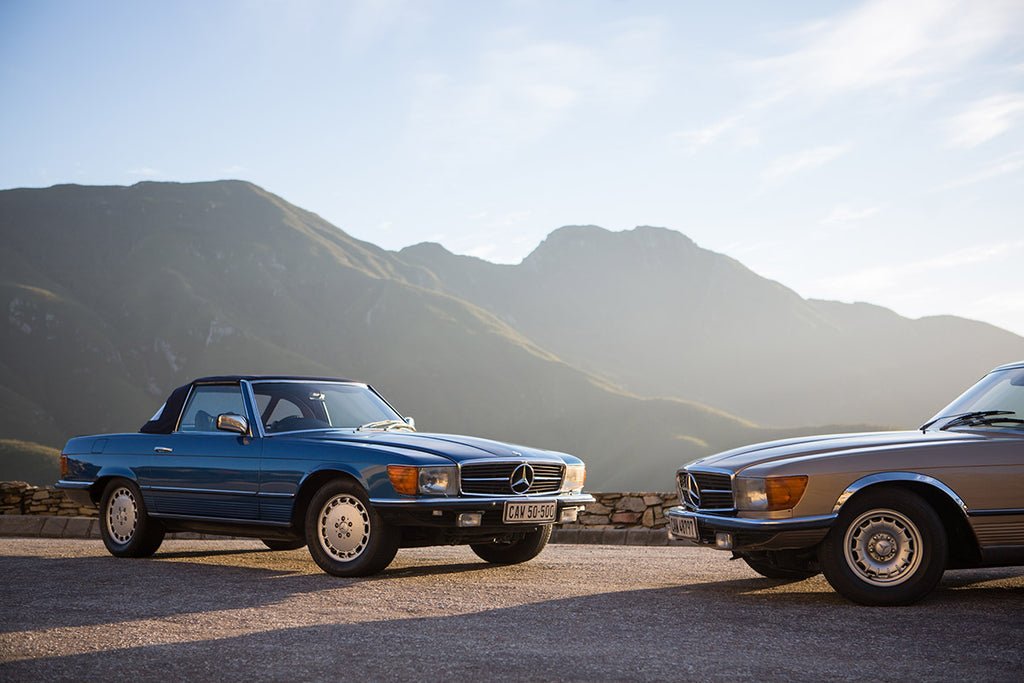
With perfectly formed roads sweeping high up from George and offering much to the keen driver, Mercedes’ 107-series coupé and roadster make ideal, entertaining transport for the "job".
Images: Charles Russell
What is the value of a car? It is a question that will fuel a few debates. The easy answer: the amount a buyer is willing to pay for the given car. Depending on your preference, though, there are cars that might seem like a bargain, especially compared to certain other models. Or, if your taste is similar to that of current market favourites, you might need to fork out more than you planned or anticipated.
Mercedes-Benz’s SL range has one of the longest family trees in the manufacturer’s history. Of course, there is the small matter of the car that laid the foundation for this range – the simply astonishingly beautiful 300SL. The square design of the R107 SL might not appeal to all buyers, but as the years have passed, their values have bottomed out and have slowly started to climb. They don’t quite come close to that of the more valuable Pagoda models though. Look at the C107 SLC, however, and it is an altogether different story...
The comparison
After a morning spent in both of these cars, the similarities and differences quickly surface. From a distance the coupé might seem as if it is simply a cabriolet version of the roadster; and you won’t be judged for thinking so. But, parked side by side, and driving them back-to-back, you realise they were each built for their respective market segments.
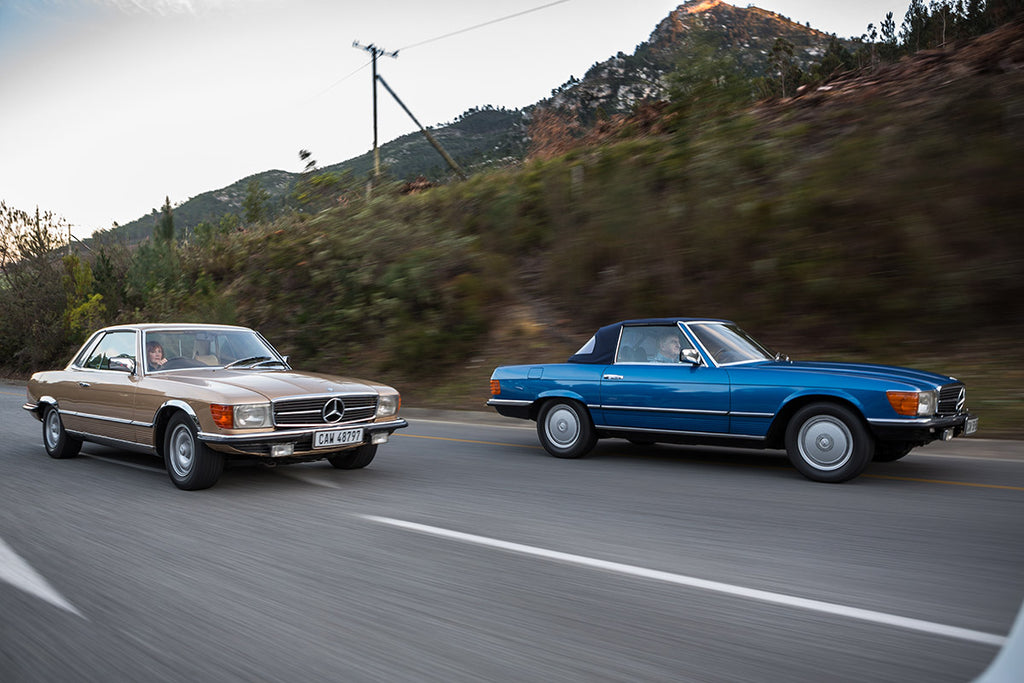
Both these cars belong to a collector in George. The owner purchased the 350SL in 1989 (the previous owner had the incorrect 500SL badge fitted). Although it is totally objective, I believe that it is a perfect colour; firstly, it’s an uncommon shade for an R107, and secondly, because the interior matches the exterior perfectly. It has done 81,000 miles (130 000 km), although it is hard to find signs of the mileage. This SL was produced in 1978 (registered in 1979), a year when only 743 of the 350SLs were made. When production came to an end, a total of 15 304 of the 350SL had rolled off Mercedes’s production line.

At the front, headlights feature the small wiper blades, a very uncommon sight in South Africa, pointing to this SL’s roots. It was probably originally earmarked for the UK market as the water temperature is indicated in Fahrenheit and the oil pressure in lb/square inch.
The SLC was unveiled at the 1971 Paris Motor Show, two months after production was halted on the 280 SE 3.5. Interestingly, this 450SLC is a more recent purchase by the owner. I expected this could be as a result of the rising interest in these cars, but the collector merely wanted to add the car to his collection of Mercedes-Benz coupés. Compared to the 3.5-litre V8 in the SL, the SLC has the stronger 4.5-litre V8 engine. Both examples are connected to automatic transmissions.

While Charles captures the first pictures, I take a proper look and the longer wheelbase of the SLC is immediately visible. This lends the SLC a different stance, especially from a front three-quarter view and in profile. In terms of elegance and style, the longer rear half of the SLC certainly looks classier than the shorter and compact dimensions of the SL. The more than 30 cm longer wheelbase plays another vital role once behind the wheel, which we will get to shortly.
Behind the wheel
I open the heavy, solid door of the SL, and the compact cabin is roomy enough for two adults. The area behind the front seats offers additional luggage space.
As I start the engine, you realise this is a smaller V8 engine compared to Mercedes’s larger capacity V8 engines of the time. The engine’s voice is not as deep and purposeful as that of the SLC's.
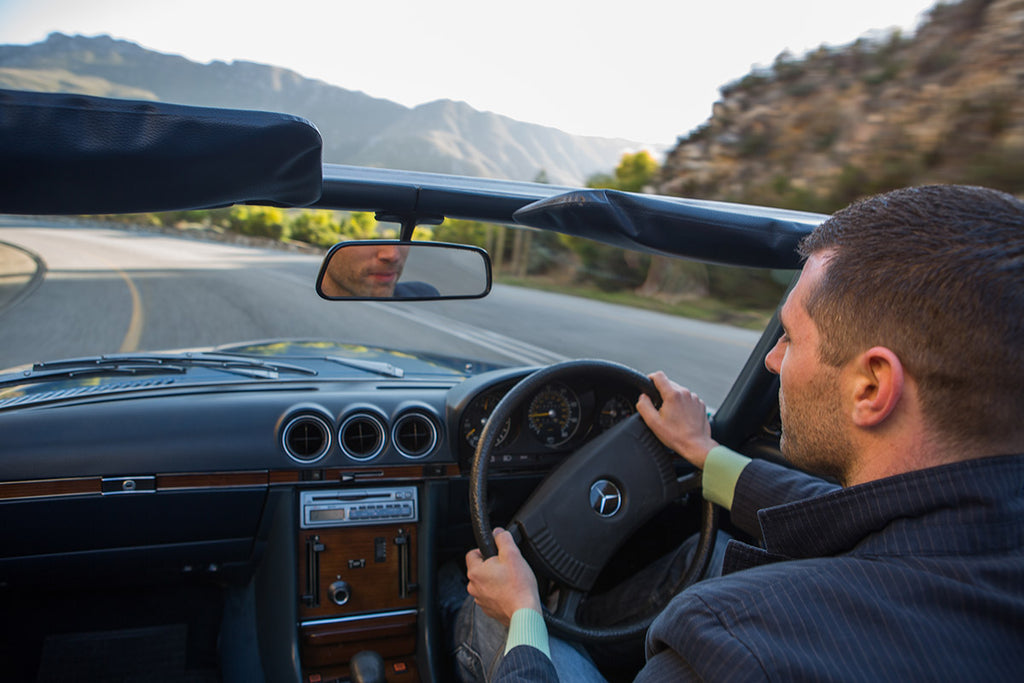
As I pull off, I point the SL’s nose along the mountain pass’s corners that flows up the side of the valley, and the SL quickly settles into a comfortable rhythm. I am probably working the engine slightly harder than I would have if it was a 500SL. Even so, the engine pulls with a level of vigour I didn’t expect, especially as you approach the final third of the rev range. With the steering wheel close to the dashboard, you feel in total control. This feeling is highlighted by the sensitive steering the moment you turn either side from dead-centre.

It’s apparent from the scuttle shake that it is a cabriolet (although the cabin still feels solid), but honestly, as I settle into a relaxing cruise, appreciating the view, I soon forget about the slight body flex. With the speedometer at an indicated 100 km/h, the engine revs in top gear at 3 000 rpm.
As I pull into the lookout point I park the SL and discuss my findings with the owner. He was keen for me to immediately slide behind the wheel of the SLC. I oblige and with the engine ticking over, there is already a slightly more serious tone from under the bonnet. Unlike today’s powerful machines with engineered exhaust tones, the aural experience from these earlier cars is dominated by their engine sounds.
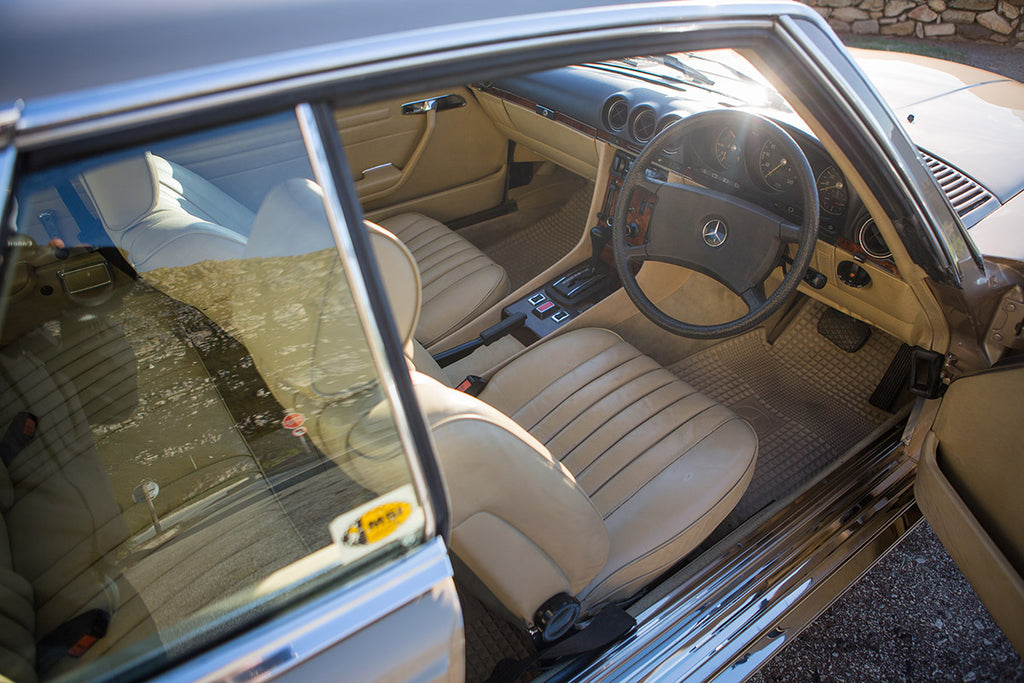
The cabin feels familiar to that of the SL, although there is a welcoming amount of additional space for small, adult passengers in the rear. The odo indicates 170 000 km, most of which was done by previous owners; the current owner bought it around 12 years ago. Since then it was resprayed in the original colour.
A similar view over the bonnet could fool you into believing you are driving an SL. However, the moment you reach for the safety belt, you realise it is a different car; it is positioned further back.
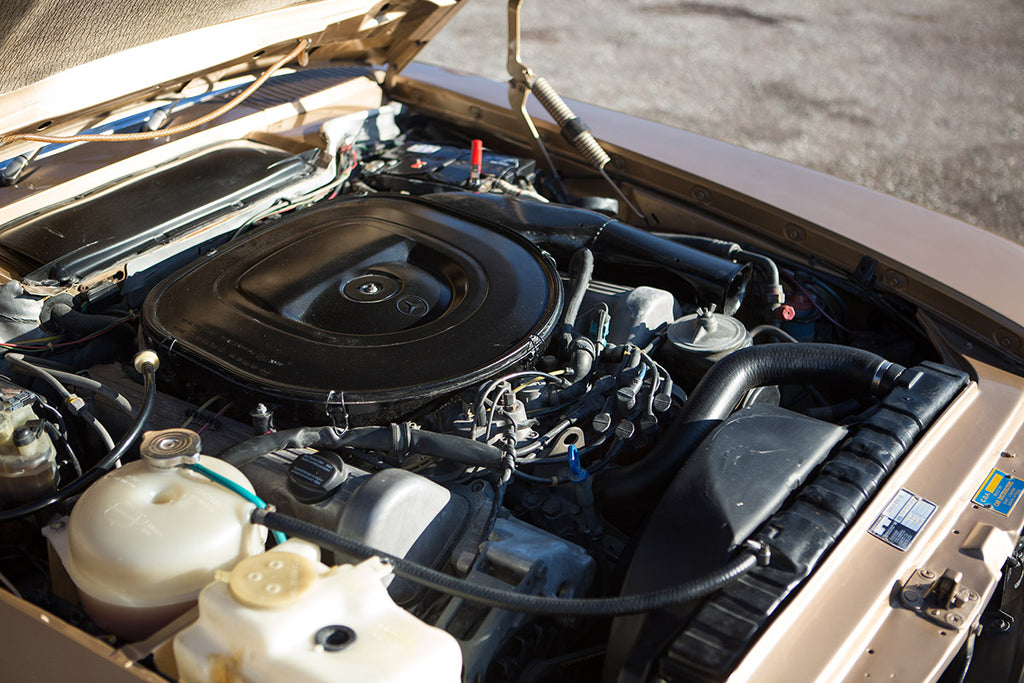
I press the throttle pedal closer to the floor and there is a noticeable amount of available torque, especially below 3 000 rpm. In the SL you have to use slightly higher revs to be able to keep up. But, press the throttle to the stop, and the slight gain in horsepower and 26 per cent gain in torque suddenly comes into play. The SLC pulls stronger and, owing to the longer wheelbase, it is marginally more stable through the corners.
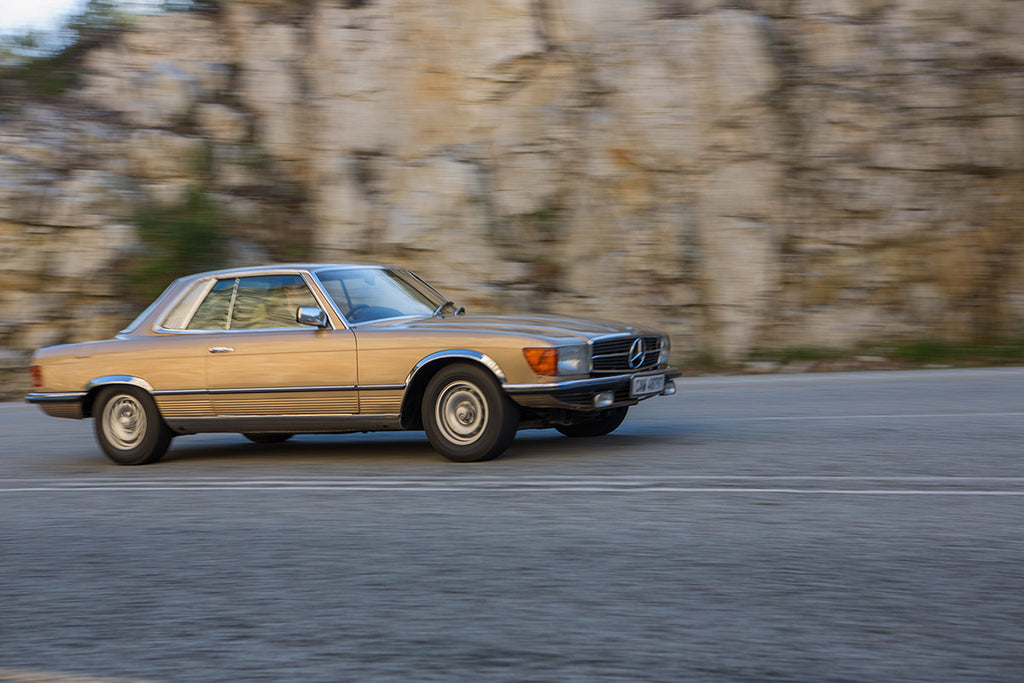
It feels as if the car settles quicker and is more composed than the SL. The unyielding road behaviour had me pushing the car a little harder; after all, it was Mercedes-Benz’s sporting coupé. By moving the gear lever into the “S” position, the transmission immediately switches to a lower gear. It retains a gear for a few seconds longer as the rev needle climbs closer to the red line and shifts to the next gear only around the 5 500 rpm mark.
Which one?
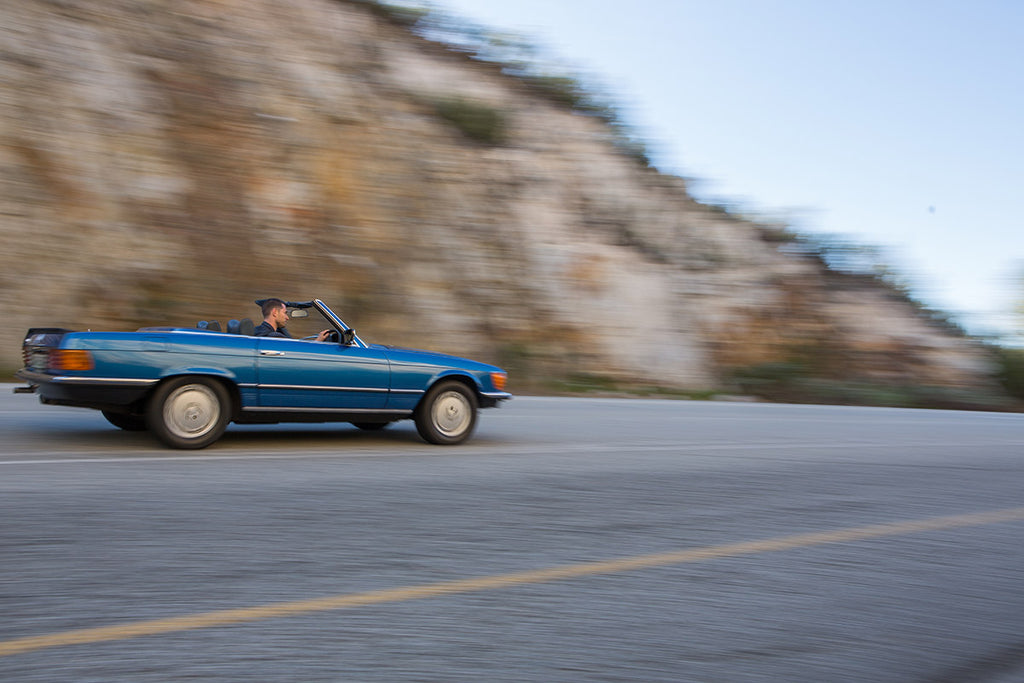
After driving both cars it is clear they are from the same era. To an extent they also offer a similar driving experience. Of course, the SL’s roof can be lowered, enough of a feature for many buyers to not even consider the SLC. As a long-distance cruiser or even just for a Sunday drive, there is strong case for the SLC.
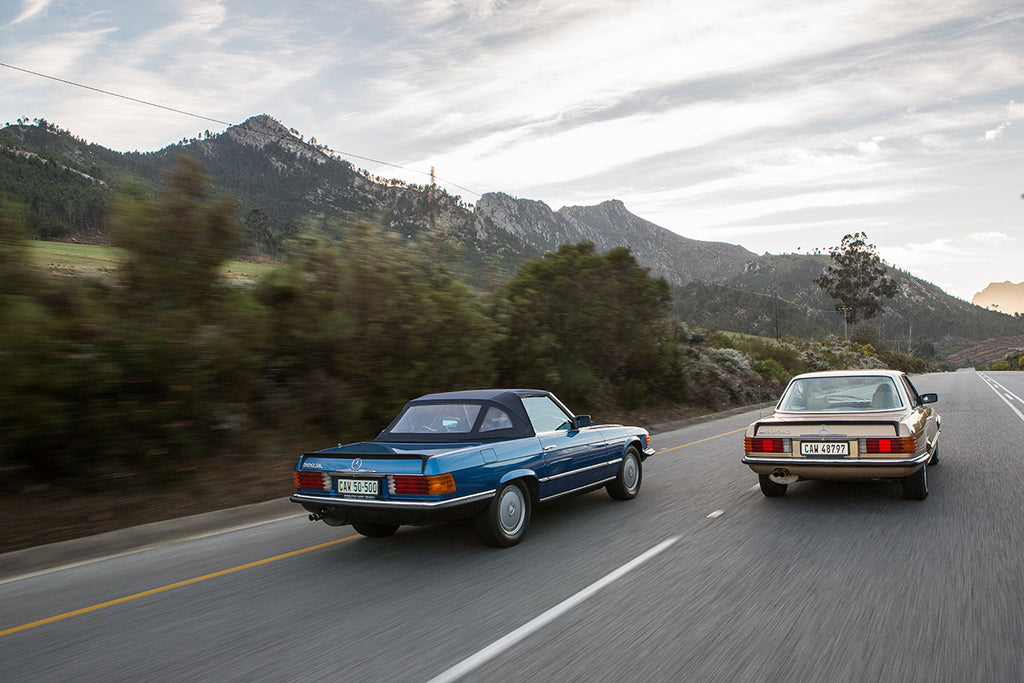
The pillarless side profile and those unique vertical blinds are two elements which make it so attractive. Motorsport enthusiasts will also point you in the direction of small victories the SLC achieved at the time, such as the 11th Rally Bandama in the Ivory Coast in 1979. A 450SLC 5.0, driven by team Mikkola/Hertz won this 5 500-km African event.
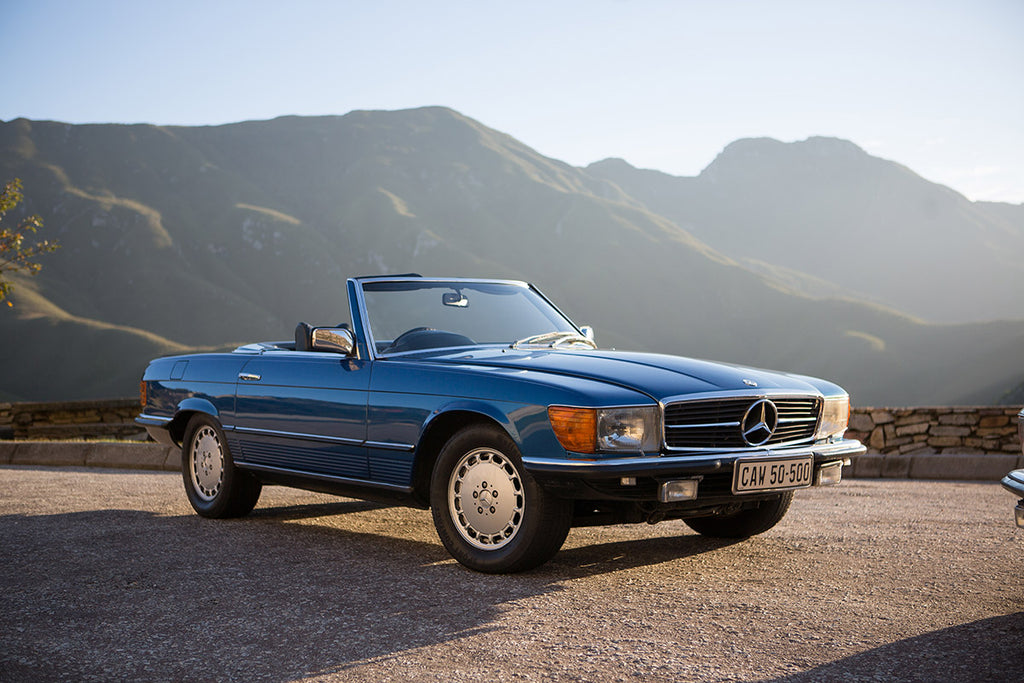
However, as one fellow enthusiast and collector once told me: “If the roof drops, the price goes up.” A valid remark but, if you can appreciate the breeze offered in the SLC when all the windows are open, it is possibly just as attractive an experience as that offered in the SL. As so many SLCs were produced, it is understandable that the general buyer doesn’t regard them as collectors’ pieces – and that will probably be the case for the immediate future. However, as demand in the R107 SL increases, its two-door sibling is unlikely to stand in its shadow for much longer.
Specifications
Mercedes-Benz 350SL (R107, E35)
Engine: M116, 3,499 cc, V8
Power: 149 kW at 5 800 rpm
Torque: 285 at 4 000 rpm
Transmission: 3-speed automatic, RWD
Weight: 1 540 kg
0-100 km/h: 10.1 seconds
Top speed: 200 km/h
Years produced: 1971 – 1980
Mercedes-Benz 450SLC (C107, E45)
Engine: M117, 4,520 cc, V8
Power: 162 kW at 5 000 rpm
Torque: 360 Nm at 3 250 rpm
Transmission: 3-speed auto, RWD
Weight: 2 120 kg
0-100 km/h: 9.3 seconds
Tops speed: 210 km/h
Years produced: 1972 – 1980
